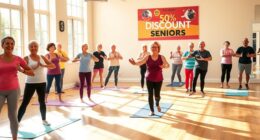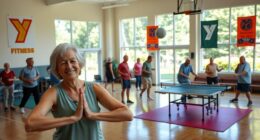Rekindling Creativity in the Digital Era
In our modern age, where digital distractions frequently take away from our natural creative talents, “The Creative Spark: Unleashing Your Inner Artist” is a valuable resource. Created by Kirana Königer, Kanthi Andayani, and Thorsten Meyer, this book presents a fresh and thorough method for revitalizing creativity.
A Global Tapestry of Creative Insights
The authors draw upon their diverse backgrounds—spanning Indonesian heritage, European influences, and global experiences—to create a rich tapestry of cultural insights. This diversity is not just a feature but a central theme, emphasizing that creativity is a universal language that transcends cultural and geographical boundaries.
Redefining Creativity for Modern Life
“The Creative Spark” invites readers to expand their understanding of creativity beyond traditional artistic roles. The authors convincingly argue that creative thinking is a vital life skill, applicable to everything from problem-solving to personal development and professional success.

The Science Behind Creativity
The book is rooted in scientific research, providing readers with insights into:
- The neurological foundations of creativity
- The roles of various brain regions in fostering creative thought
- The significance of neuroplasticity in developing creative abilities
- Environmental and lifestyle influences on creative potential
Practical Tools for Creative Development
Each chapter includes a variety of hands-on exercises designed to inspire creativity across different fields:
- Writing prompts for budding authors
- Visual challenges for artists and designers
- Culinary experiments for those passionate about food
- Mindfulness practices to boost creative awareness
- Projects that merge multiple artistic disciplines
Overcoming Creative Obstacles
The book offers strategies for navigating common creative challenges, such as:
- Breaking through creative blocks and periods of stagnation
- Conquering self-doubt and imposter syndrome
- Managing perfectionism and the fear of failure
- Harmonizing creative pursuits with everyday responsibilities
Creativity in the Digital World
The authors thoughtfully explore how technology can both aid and hinder creativity, addressing:
- The potential of digital tools to enhance creative work
- Balancing digital and analog creative practices
- Using social media to promote and share creative projects
- Ethical issues in the era of AI-generated art
A Journey of Self-Discovery Through Creativity
Interwoven with personal stories from the authors’ own creative experiences, the book adds a relatable and personal dimension. Readers are encouraged to embark on their own creative journey, guided by reflective questions and exercises designed to uncover their unique creative strengths and passions.
Critical Evaluation
Strengths:
- A holistic approach that goes beyond traditional artistic definitions
- A multicultural perspective that provides global insights
- A solid grounding in scientific research combined with practical advice
- An inclusive tone that makes creativity accessible to all readers
Considerations:
- The broad range of topics may feel overwhelming to some readers
- Certain cultural references may resonate differently with various audiences
- Advanced readers might find some concepts familiar, though the book offers new perspectives
Conclusion: A Catalyst for Creative Transformation
“The Creative Spark: Unleashing Your Inner Artist” is more than just a guide to enhancing artistic skills; it’s a blueprint for living a more imaginative and fulfilled life. By presenting creativity as an essential human attribute, the authors have crafted a work that has the potential to reshape how readers approach both art and life.
Rating: 4.85/5 stars
With its inclusive approach, strong scientific foundation, and transformative potential, “The Creative Spark” is a must-read for anyone looking to reignite their creative passions. This book stands out as a comprehensive, insightful, and practical guide to embracing creativity in all aspects of modern life.










